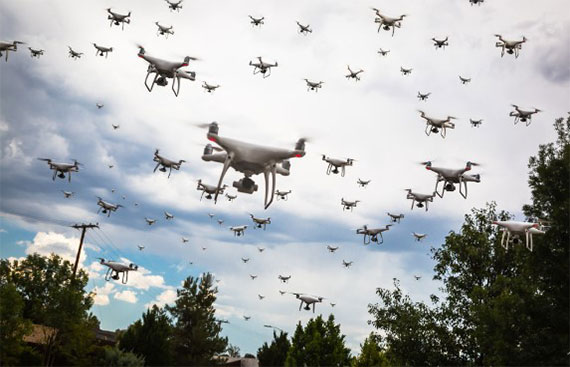Mitigating The Risks Of 'False Positives' Through Reliable Counter-Drone Solutions

Counter-drone technology has revolutionized the ability to mitigate potential threats from unmanned aerial vehicles (UAVs). These innovative solutions provide vital protection against unauthorized drones, safeguarding critical infrastructure and ensuring public safety. However, the increasing reliance on these systems has brought attention to a concerning issue – the occurrence of false drone detections. Technical glitches in these counter-drone solutions can lead to operational loopholes and mislead security forces, potentially impacting real-time operations.
As drones become more accessible to the public, their misuse poses significant risks to various sectors, including defense, thereby putting national security at risk. In response, defense forces have turned to advanced counter-drone solutions to detect, track, and neutralize the unauthorized UAVs. These systems employ a range of technologies, including radar, radio frequency sensors, and AI, to identify and counter potential threats swiftly.
While counter-drone solutions have proven effective in many instances, false drone detections have emerged as a pressing concern. The generation of inaccurate alerts or false positives can lead to security forces believing a drone threat exists when in reality it does not. Such misinterpretations can divert resources and attention away from genuine threats.
Addressing the challenges of false drone detections requires a multi-faceted approach. Manufacturers of counter-drone solutions must invest in rigorous testing, quality assurance, and continuous software updates to minimize technical glitches. Thorough testing under various environmental conditions and scenarios can help identify and rectify vulnerabilities in these systems.
Integrating multiple layers of detection and verification technologies can also enhance the reliability of counter-drone solutions. Combining different sensor technologies, such as radar, cameras, and acoustic sensors, with intelligent algorithms can reduce the likelihood of false positives and improve the overall accuracy of threat assessments.
ACSG Corp, a leading Critical Infrastructure Protection (CIP) company, has developed an innovative and cutting-edge technology that allows for the detection, tracking, and neutralization of unauthorized drones over considerable distances, reaching several kilometers with the help of Artificial Intelligence (AI) & Machine Learning (ML)- based algorithms and video analytics.
A senior R&D software engineer pointed out: These algorithms enable the system to not only distinguish drones from other airborne objects, such as birds or clouds, but also possess the capability to classify the make and model of the detected drones. By harnessing the potential of high-end Electro-Optical Cameras and RF Detectors, our anti-drone solution is capable of providing comprehensive surveillance and analysis”.
As defense forces continue to rely on these systems, it is imperative to address technical glitches and minimize false positives for a safer and more secure future.
